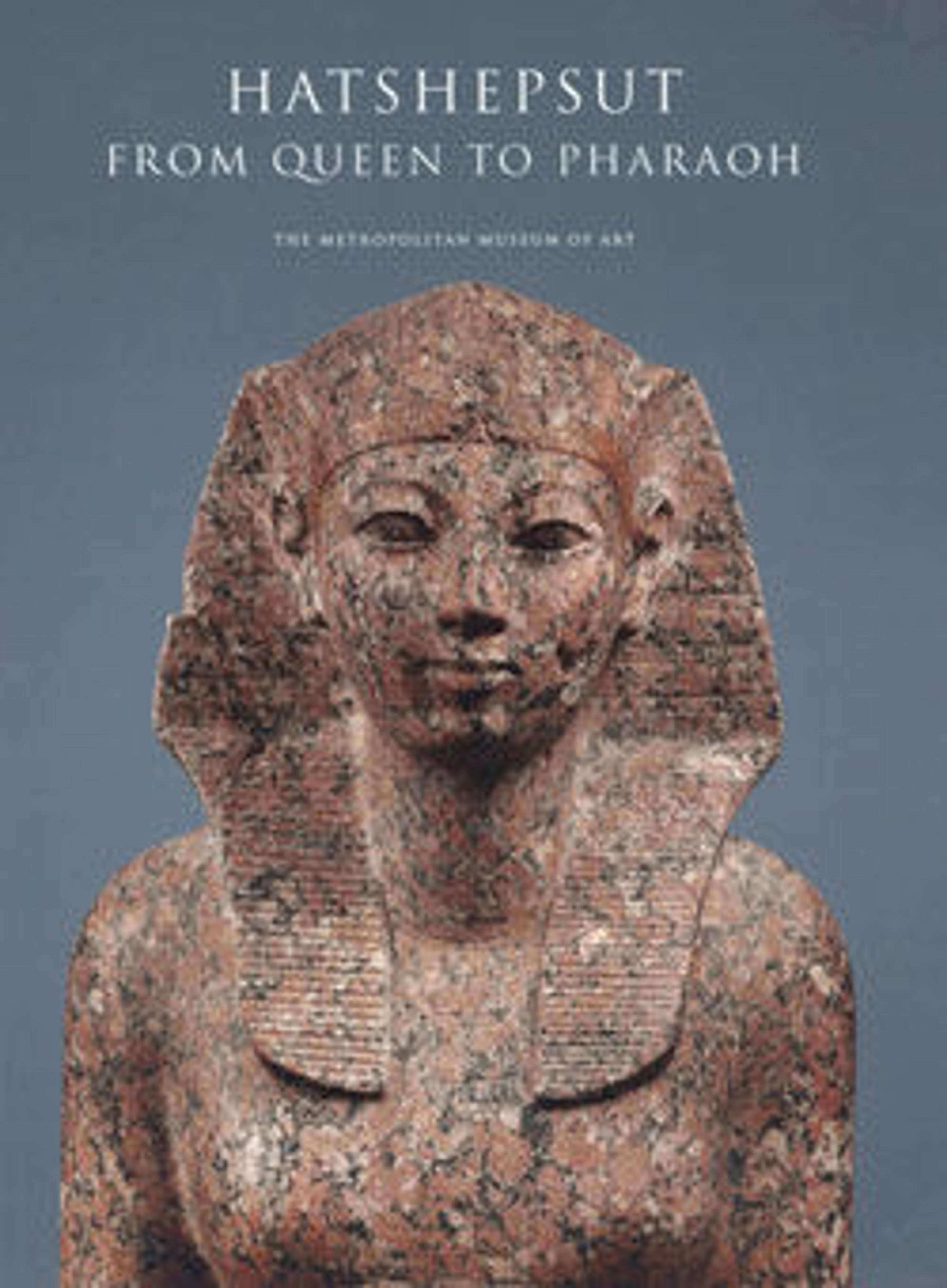Cowroid Seal Amulet Inscribed for the God's Wife Hatshepsut
This cowroid seal amulet (shaped like a cowrie shell) was found in a foundation deposit associated with Hatshepsut's funerary temple at Deir el-Bahri. The base is inscribed with her personal name, Hatshepsut ("foremost of noblewomen") linked with the title God's Wife. Hatshepsut inherited the title while she served as principal queen of her half-brother, Thutmose II. Later in her life, after taking on the titles of King, Hatshepsut passed the title to her daughter, Neferure (see scarab 27.3.326).
The back of the seal amulet has been inscribed with the image of a tilapia fish eating water plants. Around the edge is a decorative pattern that suggests the setting of a swivel ring bezel (see 36.3.46).
The back of the seal amulet has been inscribed with the image of a tilapia fish eating water plants. Around the edge is a decorative pattern that suggests the setting of a swivel ring bezel (see 36.3.46).
Artwork Details
- Title: Cowroid Seal Amulet Inscribed for the God's Wife Hatshepsut
- Period: New Kingdom
- Dynasty: Dynasty 18
- Reign: Joint reign of Hatshepsut and Thutmose III
- Date: ca. 1479–1458 B.C.
- Geography: From Egypt, Upper Egypt, Thebes, Deir el-Bahri, Temple of Hatshepsut, Foundation Deposit 8 (H), MMA excavations, 1926–27
- Medium: Steatite (glazed)
- Dimensions: L. 1.9 cm (3/4 in.); W. 1.3 cm (1/2 in.); H. 0.5 cm (3/16 in.)
- Credit Line: Rogers Fund, 1927
- Object Number: 27.3.180
- Curatorial Department: Egyptian Art
More Artwork
Research Resources
The Met provides unparalleled resources for research and welcomes an international community of students and scholars. The Met's Open Access API is where creators and researchers can connect to the The Met collection. Open Access data and public domain images are available for unrestricted commercial and noncommercial use without permission or fee.
To request images under copyright and other restrictions, please use this Image Request form.
Feedback
We continue to research and examine historical and cultural context for objects in The Met collection. If you have comments or questions about this object record, please complete and submit this form. The Museum looks forward to receiving your comments.
